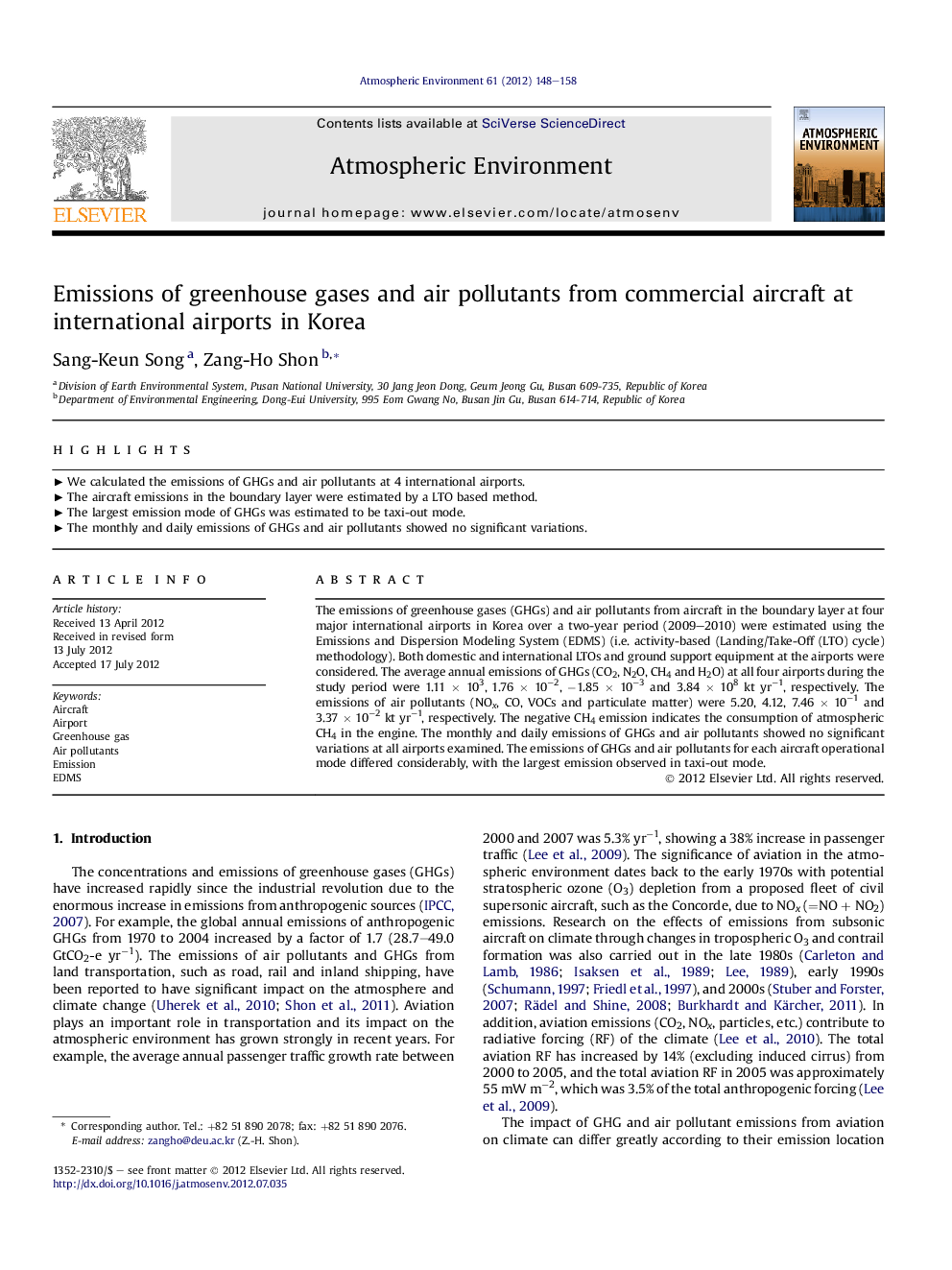| Article ID | Journal | Published Year | Pages | File Type |
|---|---|---|---|---|
| 6342124 | Atmospheric Environment | 2012 | 11 Pages |
The emissions of greenhouse gases (GHGs) and air pollutants from aircraft in the boundary layer at four major international airports in Korea over a two-year period (2009-2010) were estimated using the Emissions and Dispersion Modeling System (EDMS) (i.e. activity-based (Landing/Take-Off (LTO) cycle) methodology). Both domestic and international LTOs and ground support equipment at the airports were considered. The average annual emissions of GHGs (CO2, N2O, CH4 and H2O) at all four airports during the study period were 1.11 Ã 103, 1.76 Ã 10â2, â1.85 Ã 10â3 and 3.84 Ã 108 kt yrâ1, respectively. The emissions of air pollutants (NOx, CO, VOCs and particulate matter) were 5.20, 4.12, 7.46 Ã 10â1 and 3.37 Ã 10â2 kt yrâ1, respectively. The negative CH4 emission indicates the consumption of atmospheric CH4 in the engine. The monthly and daily emissions of GHGs and air pollutants showed no significant variations at all airports examined. The emissions of GHGs and air pollutants for each aircraft operational mode differed considerably, with the largest emission observed in taxi-out mode.
⺠We calculated the emissions of GHGs and air pollutants at 4 international airports. ⺠The aircraft emissions in the boundary layer were estimated by a LTO based method. ⺠The largest emission mode of GHGs was estimated to be taxi-out mode. ⺠The monthly and daily emissions of GHGs and air pollutants showed no significant variations.
